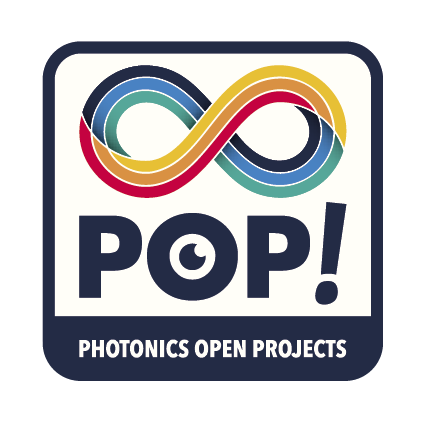What are the possible distances between the video projector and the scene / sample? Is the focal length of the video projector the limiting factor ?
The recommended distances of use for macroscopic scenes are between 50cm and 1m. A key factor to take into account is that the optical flux reflected by the scene decreases in proportion to the square of this distance. In other words, depending on the reflectivity of the objects in the scene, the measurement distance will have to be optimised to guarantee the quality of the measured data and limit acquisition times.
Are there more efficient wavelength ranges ? What about infrared?
By design, the ONE-PIX kit is optimised to operate in the visible spectral range (400nm-700nm). However, it is possible to adapt the instrument’s optics to extend the spectral range to 800 nm. Note that these parameters also depend on the specifications of the spectrometer used.
How long does it take to acquire an image and what parameters can be changed to optimise data quality ?
To measure a hypercube – a three-dimensional image in which each pixel corresponds to a spectrum – a user must choose the desired resolution and optimise the spectrometer’s integration time in order to maximise the spectral quality of the measurements. A parameter that allows multiple repetitions to be measured per projection and optimises spectral quality is also implemented. The spatial resolution of the scene depends on the imaging method used. In the end, acquisition times are proportional to the product of the spectrometer integration time, the number of repetitions per projection and the number of projections of structured patterns.
In terms of the number of structured patterns to be generated, the paradigm in compressed imaging is that you need as many as the pixels targeted. The challenge in this new discipline is to reduce this ratio depending on the use case. In real field conditions, the PRO-PIX sensor achieves a ratio of 25% for professional scenes, without any prior knowledge, and below 1% with a custom algorithm. Using the ONE-PIX kit is a good practical exercise (or even a good challenge for a student project) to ask the students to implement the libraries needed to reduce this acquisition compression ratio, with various constraints such as the absence of loss of angular information, the existence of a priori information or homogeneous acquisition conditions…
Is there a limitation in terms of spectral range? In other words, can we measure up to 2400/2500 nm?
At present, the ONE-PIX kit measures in the visible and near infrared regions. The industrial version, PRO-PIX, will enable you to measure over a wider spectral range (UV/VIS/SWIR).
Given the cost of 400-1000 nm HSI cameras, is the price advantage of the ONE PIX system worthwhile if we stay below 1000 nm?
ONE-PIX is a very good lab and teaching tool. The instrument is affordable compared with other spectral cameras, it can be reconfigured in terms of hardware and software to avoid significant additional costs for future adaptations and, above all, this kit gives access to a growing community of users and researchers for different types of use cases.
What type of spectrometer can be adapted as a hyperspectral imager using the ONE-PIX kit?
To adapt a spectrometer in the ONE-PIX kit, it must be controllable via Python. In addition, depending on your needs, you need to take a close look at which spectrometer to select for reasons of measurement speed or quality. Photonics Open Projects and IDIL will be happy to help you with these questions.
